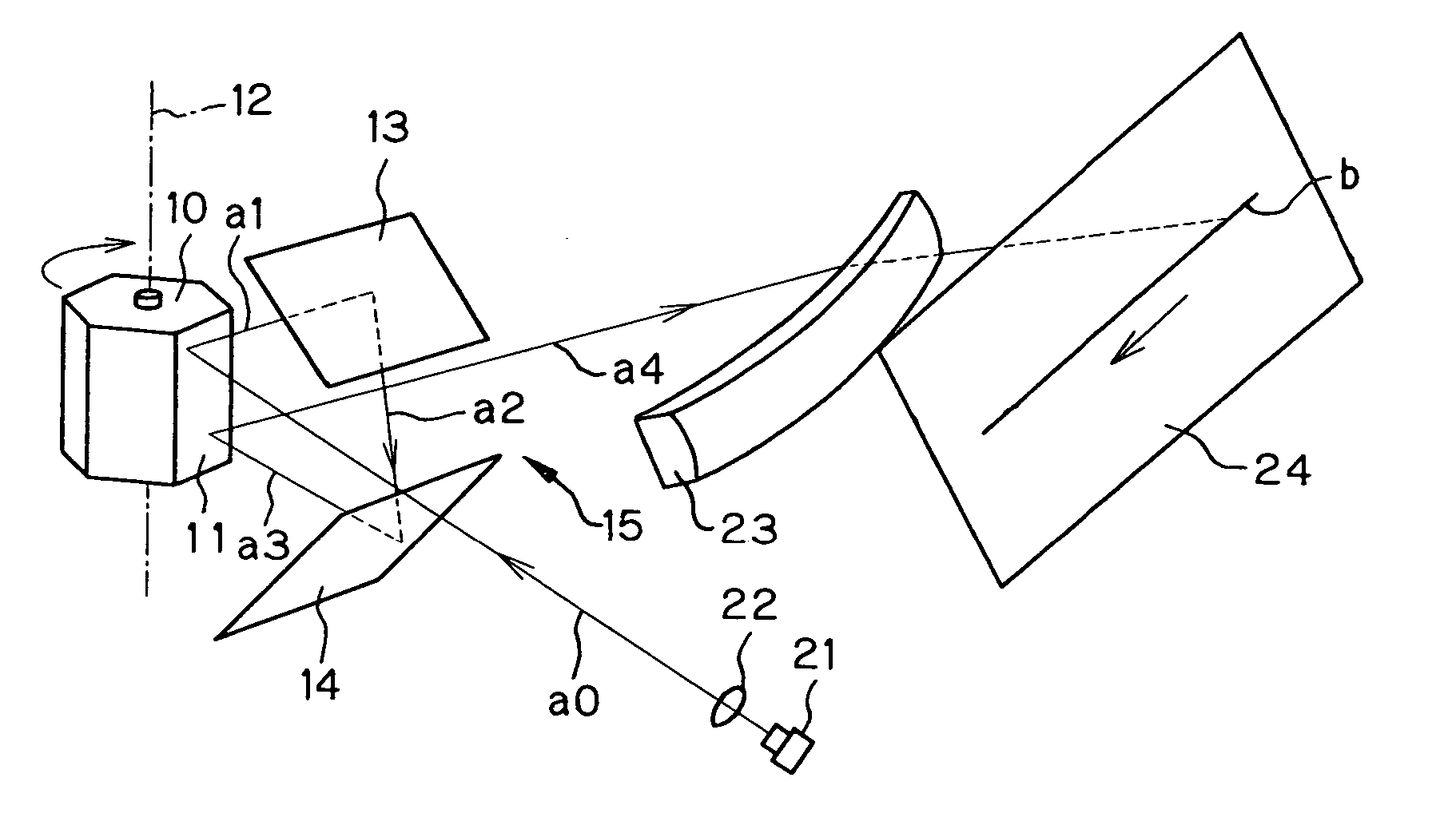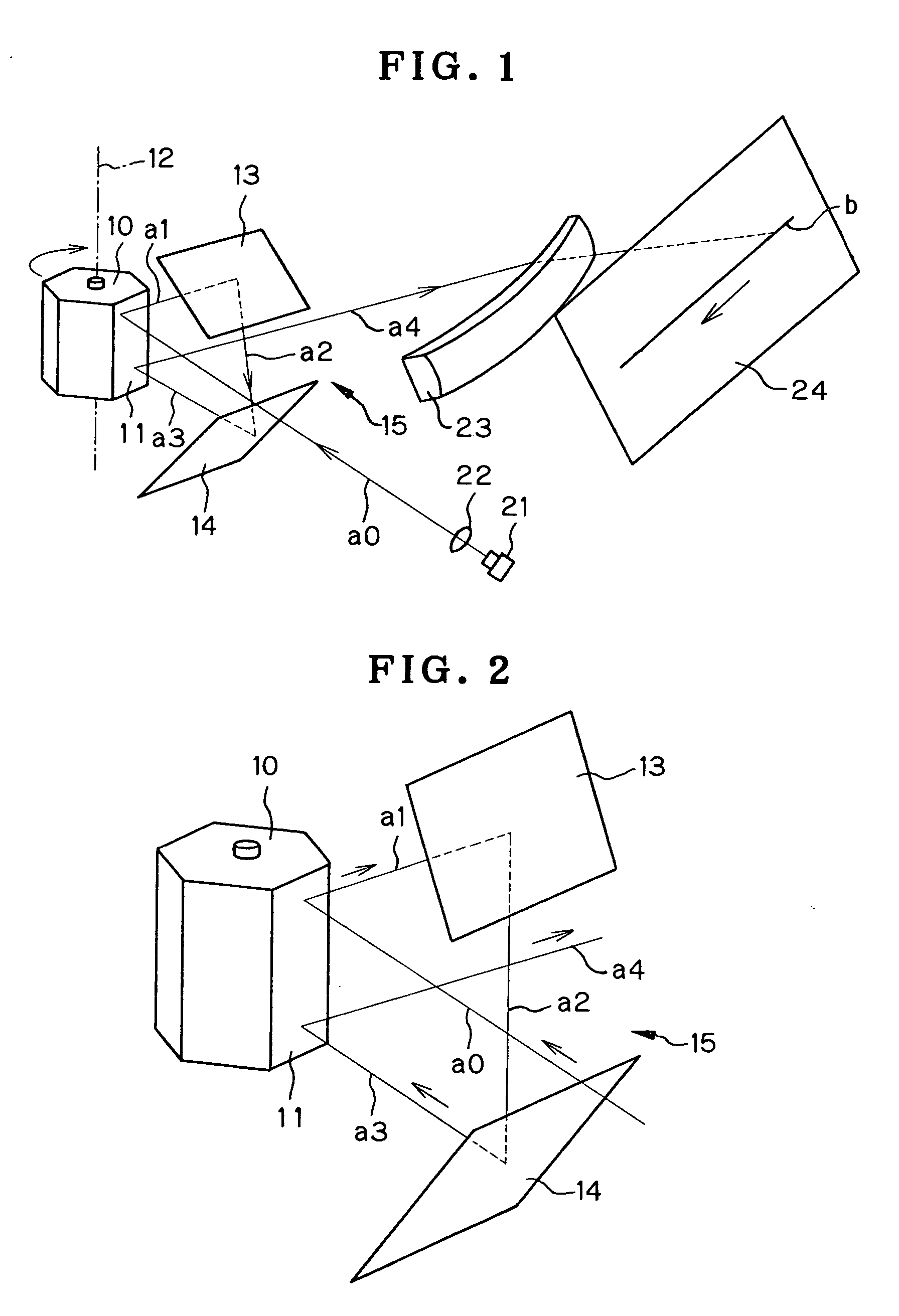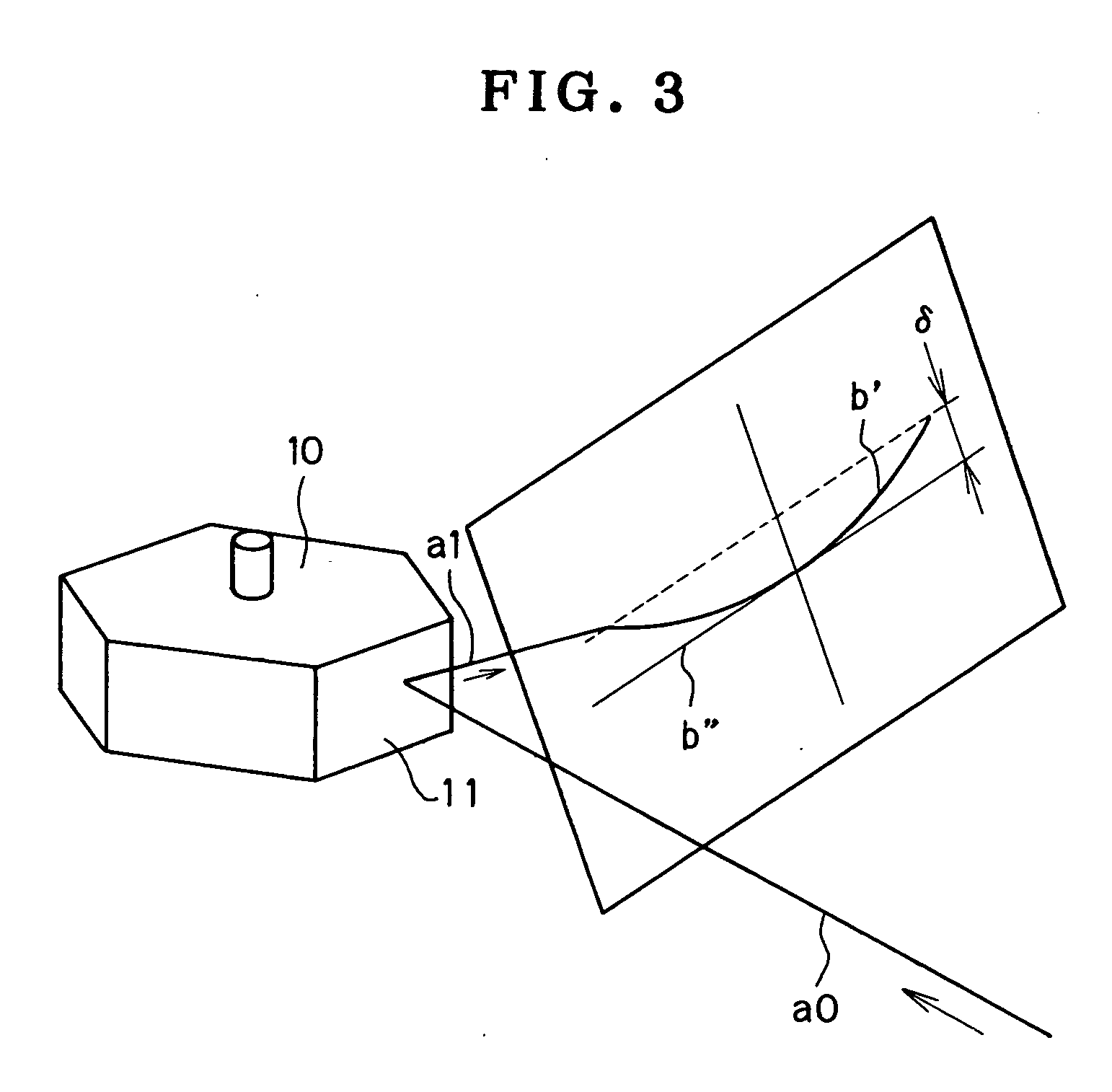Optical scanner, and mechanism for cleaning optical scanner cover glass
- Summary
- Abstract
- Description
- Claims
- Application Information
AI Technical Summary
Benefits of technology
Problems solved by technology
Method used
Image
Examples
first embodiment
FIG. 1 is a perspective view showing the entire structure of an optical scanning device according to the present invention and FIG. 2 is a perspective view showing the light deflective optical system as main parts of the optical scanning device.
According to this structure, an optical deflector is composed of a polygon mirror 10 taking a form of a polygonal column and having a plurality (six in the illustrated example) of deflective reflecting facets 11 on the peripheral sides of the polygonal column. The polygon mirror 10 rotates about its rotational axis 12 so that the deflective reflecting facets 11 revolve about the rotational axis 12. Two stationary plane mirrors 13, 14 are disposed to face a deflective reflecting facet 11 related to optical deflection so that these plane mirrors 13, 14 have an angle relative to each other and have a space 15 therebetween.
A light beam from a light source 21 is converted into a parallel light beam a0 by a lens 22 and is incident on the deflect...
second embodiment
An optical scanning device according to the present invention will be described with reference to FIG. 18.
FIG. 18 is a perspective view showing the entire structure of the optical scanning device according to another embodiment of the present invention and FIG. 19 is a perspective view showing a light deflective optical system as main parts of the optical scanning device.
In the optical scanning device according to the first embodiment of the present invention as mentioned above, the lens with numeral 22 in FIG. 1 is a collimator lens so that the light beam converted by the lens 22 is a parallel beam which is parallel to both the direction perpendicular to and the direction parallel to the rotational axis 12. In the optical scanning device according to the second embodiment, however, a lens with numeral 22′ in FIG. 18 is an anamorphic lens. This is a point different from the first embodiment.
According to this structure, an optical deflector is composed of a polygon mirror 10 taki...
PUM
 Login to View More
Login to View More Abstract
Description
Claims
Application Information
 Login to View More
Login to View More - R&D
- Intellectual Property
- Life Sciences
- Materials
- Tech Scout
- Unparalleled Data Quality
- Higher Quality Content
- 60% Fewer Hallucinations
Browse by: Latest US Patents, China's latest patents, Technical Efficacy Thesaurus, Application Domain, Technology Topic, Popular Technical Reports.
© 2025 PatSnap. All rights reserved.Legal|Privacy policy|Modern Slavery Act Transparency Statement|Sitemap|About US| Contact US: help@patsnap.com



